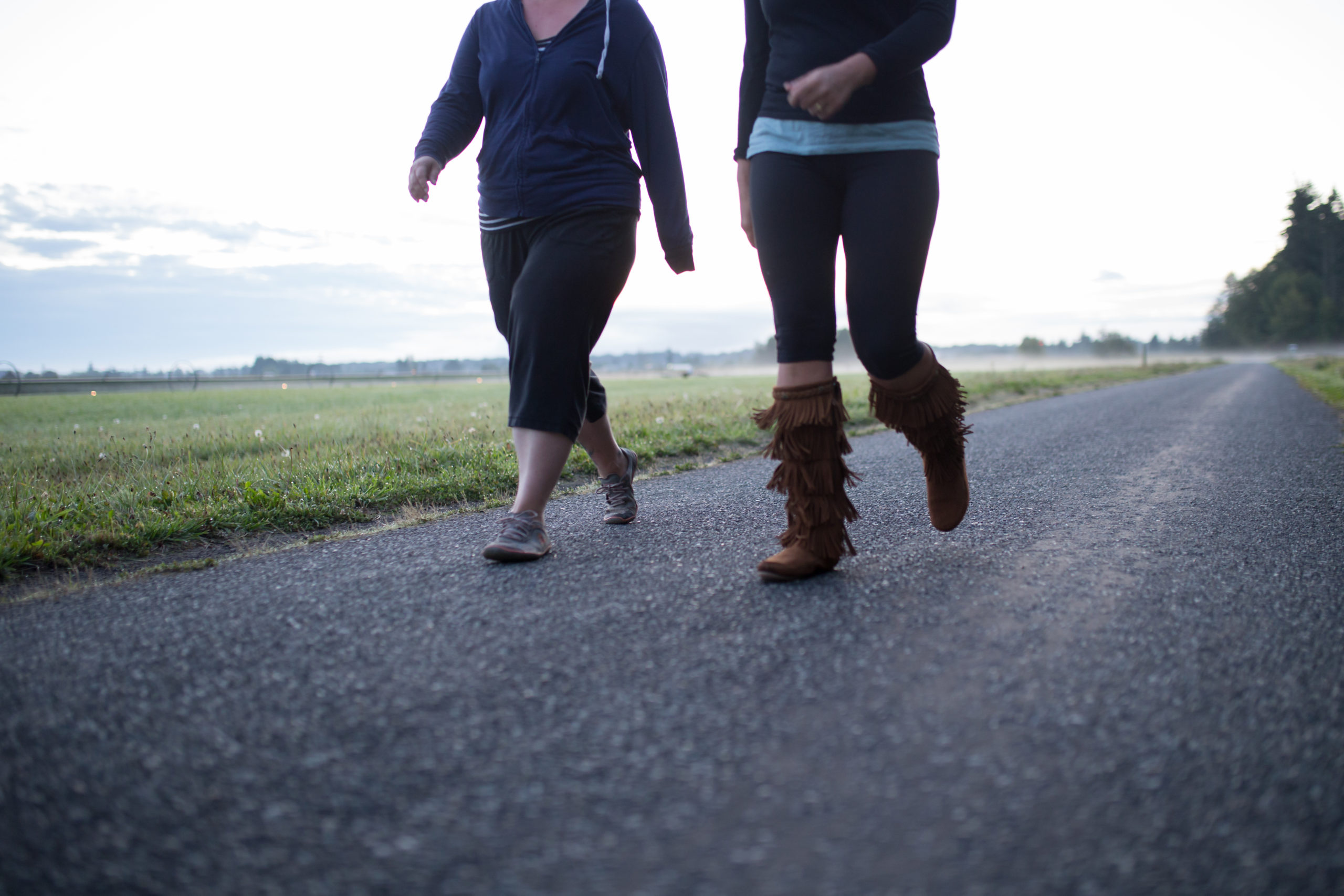This post from 2013 was edited, updated, and expanded in 2020. This is one of a handful of our favorite articles on walking, including topics covering what various “walking parts” do as well as other whole-body considerations. Find the rest of them in the walking section of Our Favorite Feet, Footwear, and Walking Resources.
Last night I watched Superman, the movie. Not the new creepy one, but the old one. With Christopher Reeve, who forgot that we were supposed to get married.
I preface my post with these facts because I was trying to get my iMovie to work correctly, and it wouldn’t, but it may have been due to the fact that I clicked something I wasn’t supposed to while watching a hunk in blue tights.
Anyhow, it's still Walktober which means more walking posts, with stuff for you to practice. A couple of weeks ago we talked about some differences between walking and running. This picture shows the classic difference of how the center of mass travels during both.
But, here’s the problem. People aren’t really *walking* like this any more, as defined by clinical determinants of gait. These determinants are how biomechanists calculate forces and measure joint changes. Many people’s center of mass while walking looks similar to they way their center of mass moves while running; that is, up and down.
When I watch people move, I’ve always been able to see what their joints are doing, even when they have their clothes on. I don’t know how or why, but that seems to be the thing I’m really good at. I was hoping it would be something like writing operas, or painting frescoes, but nope. That’s not what I got. What I got plays out more like this:
Katy (watching Superman): That guy playing Clark Kent as a kid is limping.
Husband: Shhhhh.
Katy: There’s something wrong with his hip.
Husband: Shhhhh (but reaches for iPhone)
Katy: I love Superman.
Husband: Who doesn’t?
Katy: Shhhh
Husband (super-movie nerd): I just used my IMDB app and it says that the kid tore his hamstring muscle while filming. That’s why he’s limping.
Ha! Katy 1, Superman 0.
How the pelvis moves up and down while walking has a lot to do with the knees, and how much you bend them with each step. You may have heard physicists say that human walking is really just controlled falling, but I think what they're looking at is a gait problem vs. human walking. It's what walking becomes when your hips and glutes aren't very strong.
Looking at dots and lines isn't as good as watching how the body parts those dots and lines represent move while walking, so I shot some videos.
Here’s a regular-speed clip of walking, with the leg fully extended as it receives the weight of the body.
Now here it is in slow motion. Get your bread and jelly, cuz this video is ex-tra smooth.
Here is a video of a knee joint that isn't stable and bends under the weight of the body, i.e. how the center of mass travels downward for a bit with each step. Feel free to make “boing, boing, boing” noises as I walk by.
Now here it is in slow motion. I have no idea why this clip got all stretched out and weird. I spent about an hour trying to fix it, to no avail. Hopefully you can see that when the leg receives the weight of the body, it bends further and then has to lift the body’s weight back up. With this gait pattern, every loading cycle uses the quads and acts on the knees in a way that pulls the patella (knee cap) back into the bones behind it (read Move Your DNA for more on that and on patella centering).
If you want to work on smoothing your gait, you need:
1. Hamstring length (which determines the knees' ability to straighten). You sit a lot? Get to working on your hamstring stretches and try to stand more often and walk a bit more throughout the day. Here's a tutorial on hamstring stretching.
2. A long-enough psoas. Legs still won't straighten? Check out this psoas release exercise and why it matters.
3. Lateral hip strength. To getcha some, read through this Pelvic List tutorial.
4. Coordination. Unless you're going uphill, you don't want to straighten your leg after your body weight is on it. This uses the quads and knees more than necessary. In flat- and level-ground walking, try to straighten the leg in the air, just before landing. It's a timing thing, and it takes practice!
Have fun practicing! Or at least watching others to see if you can spot the boing!


